QuestionI have a boxer almost 4 months old. We have been trying to house break him, and its not working to well. We got a crate we keep him in while were gone, and he pee's in the crate. We will try to carry him outside to use the bathroom and about 75% of the time he just freezes up, and will come straight inside and use the bathroom. So how can I get him to stop peeing in the crate and in the house?
AnswerHow large is the crate? Do you put blanket or pad in crate? Your crate should be only large enough for the dog to enter, tightly turn around and lay down. It should not be able to stand or squat and pee. The dog needs to be crate trained to begin with then use the crate to house train. See my other answers for these issues.
Follow this link for house training:
http://en.allexperts.com/q/Dog-Training-3333/2009/12/new-puppy-training.htm
This is crate training:
"I have a 9 week old mini schnauzer and have had him for 2 weeks. He's having issues adjusting to his crate. As soon as I put him in there.. He immediately throws a fit by yelping loudly, growling, jumping up on the cage, and sometime he gets so worked up he goes to the bathroom even after he just went outside. He usually stops after 15-30 min... If he doesn't soil his bed first. I don't know how to make it better for him. I have an older schnauzer, and I don't recall this behavior at all. I remember him waking me up in the morning yelping but never when first going in the crate. I've been ignoring this behavior but it's been 2 weeks and still no improvement. I've thought about taking him out of the crate and leaving him in the other room with my older dog because that seems to calm him, But I'm afraid housebreaking would be much harder. Any suggestions on what I should do?
Answer: I will be assuming certain things in addressing this behavior. Normally I would ask these question and maybe more for a more complete understanding. How large is the crate? Do you have a pad or blanket in the crate? Are you leaving the dog in the soiled crate until he settles down or removing him immediately and cleaning the crate? Do you only put him in the crate at certain times and what precedes this crate time?
With this breed and age the crate should be the very small. Just large enough the dog can be put in or crawl inside. It should not be able to comfortably turn around let alone stand up or jump around. Although you may think this confined space would be uncomfortable for a dog they actually find comfort and security in being in close confined, protective environments especially at this age. Think how young pups all sleep together laying on top of one another intertwined. This would be the first place I would start.
We will use the "ONE, TWO, GOOD DOG! protocol to address the issue. What is our objective: To get the dog to lie quietly and comfortably in its crate. To get the dog to do this we must reward this behavior and this behavior only. First lets take a look at the dog and its mental maturity level. Sometimes dogs just aren't mentally mature enough at this age to easily understand the process if not done precisely right. So this may be playing into this particular problem. Keep this in mind.
Remove everything from the crate. No blankets and no pads.
To start out with begin putting the dog in this bare crate after a period of exercise or play don't wait until you are trying to sleep. Remember you need to crate train before you house train with the crate. When the dog lays quietly (passive time) in its crate for 1 minutes then praise the dog verbally while still in its crate. Remove it from the crate. When you open the crate don't call him out or let him exit on his own instead physically remove him from the crate. Now play with the dog and make it move around for a couple minutes then replace in the crate again this time for 2 or 3 minutes and repeat. If the dog goes into one of it tantrums ignore it until it settles down for the "passive time". Repeat this 6 or 7 times or until the dog wants to stay in the crate. Do this for a couple sessions gradually increasing the "passive time" length.
Be progressive with the passive time length don't start with 1 minute each session but start where you left off the previous session. By the second rep of the second session you should begin leaving the crate open a little. If the dog tries to exit simply place it back into the crate and latch it. We want the dog to want to be in there and we will know we have this accomplished when we can do it with the crate open. Try not to use any vocal commands during this time as this may only confuse the dog. You will see the dog begin to accept and find comfort in the crate. If the crate is only large enough to lay in comfortably it will help control the action of the dog thus the recommendation for the smaller crate. You can move up to a larger one once the dog accepts the crate and is house trained. By finding a period when the dog is tired and wants to be quiet it will be easier to accomplish our objective. The time when the pups wants to curl up on your lap and sleep is the perfect time for this learning lesson. Often in using this method of dealing with this behavior we will see the dog turn and walk back into the crate after the 3rd or 4th rep the very first session. Simple really! The dog wants to relax so we show it the crate is the place it can do that without being bothered. By removing it from the crate and making it move around and exercise when it wants to relax and be still we are actually conditioning a desire in the dog to seek the crate when it wants rest. Here is how the ONE, TWO, GOOD DOG! protocol occurs in the process. By confining the dog in a small crate where it is unable to move much and ignoring its tantrum behavior we accomplish the ONE, The dog relaxing and being quiet is TWO, and the verbal praise while the dog is in the crate and quiet is the GOOD DOG! Thus we complete the ONE, TWO, GOOD DOG! and the dog understands and learns. The consistent reps remove confusion from the dog and allow it to easily and quickly identify the behavior that brings about positive outcome or reward. A pad or blanket in the crate only serves as a distraction to the pup so don't use one until the dog accepts and even seeks out the crate for relaxation and comfort. Same thing when house training. If you think the dog will get cold then put a larger blanket under and around the crate but not where the dog can get to it. In fact sometimes making the crate dark inside will actually draw the dog inside. Remember the simpler and more consistent you keep things the easier the dog will understand and learn what you teach. You may later further encourage the dog to recognize the crate as home by putting his toys and chews inside but do not make the mistake of doing this before or during this teaching period as it will only distract from the learning process.
If you are removing the dog from the crate when it soils it then you are rewarding the bad behavior so be sure the dog experiences passive time before you remove it and clean the crate. It won't hurt the dog to deal with the "soil" for a short time.
If you follow this procedure your dog should accept the crate within a few days. If you continue to have problems please call and I will address the particulars of your situation directly. Dr. Hogan 509-991-0385 until 10pm Pacific Time"

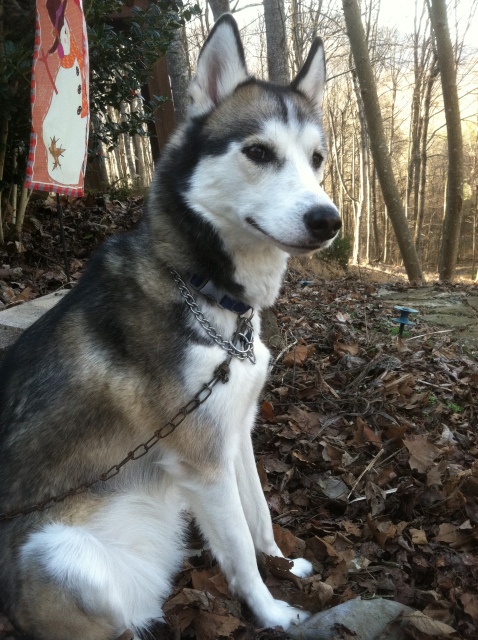 Is putting my dog in a cage a good form of punishment?
Question
Blue
My Siberian husky, Blue, as been b
Is putting my dog in a cage a good form of punishment?
Question
Blue
My Siberian husky, Blue, as been b
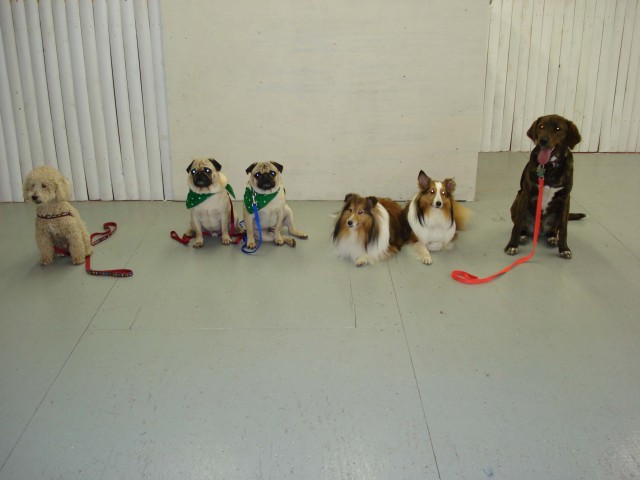 Male Chesador
QuestionWe have a 8 month old puppy that is more than s
Male Chesador
QuestionWe have a 8 month old puppy that is more than s
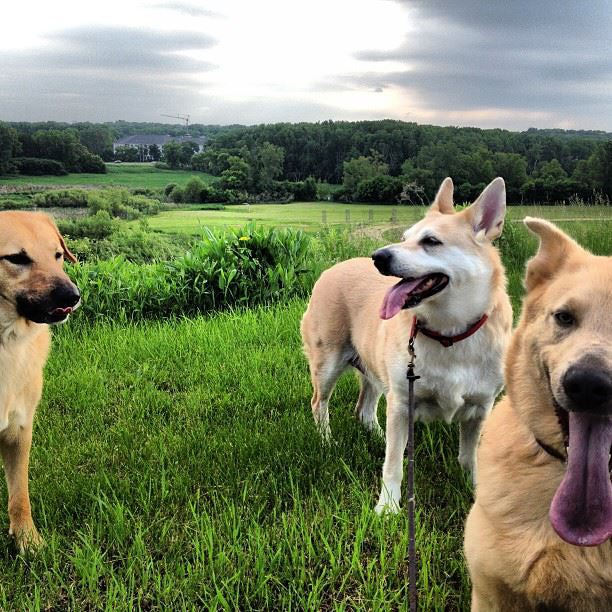 traumatic
QuestionI have a 6 lb Yorkie that is a rescue, weve had
traumatic
QuestionI have a 6 lb Yorkie that is a rescue, weve had
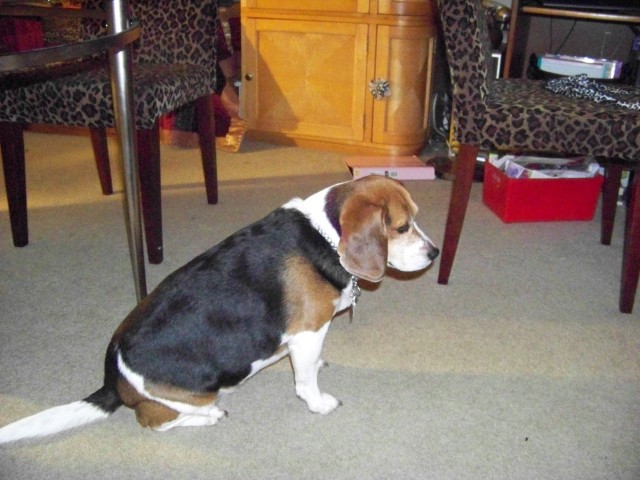 Crystal the beagle
Question
Crystal
Crystal is 8 1/2 years old,she is a be
Crystal the beagle
Question
Crystal
Crystal is 8 1/2 years old,she is a be
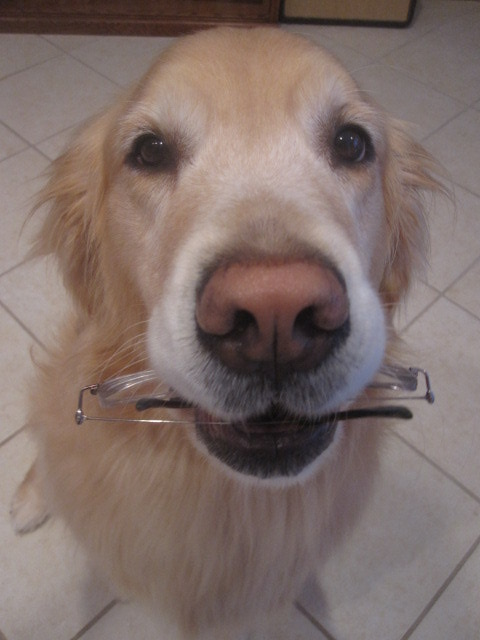 question about beagle puppy
QuestionHello, I have recently acquired a beagle puppy.
question about beagle puppy
QuestionHello, I have recently acquired a beagle puppy.